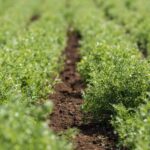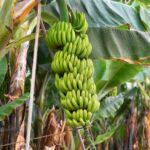Clubroot is a serious disease that affects mustard greens and other cruciferous vegetables, caused by the soil-borne pathogen Plasmodiophora brassicae. Early detection of clubroot symptoms is crucial for preventing its spread and minimizing crop damage. Here are ten signs to watch for:
- Stunted Growth: Noticeably slower growth and smaller than usual plant size, especially compared to healthy mustard greens.
- Yellowing Leaves: Yellowing of leaves, starting from the older leaves and progressing upwards. This can mimic nutrient deficiency but doesn’t improve with fertilization.
- Wilting and Drooping: Leaves may wilt even when the soil moisture is adequate, and plants may appear generally droopy.
- Root Swelling: Formation of swollen or distorted roots, typically forming club-like structures that give the disease its name.
- Reduced Leaf Size: Leaves may become smaller than usual, and the overall foliage may appear less dense.
- Generalized Poor Health: Plants exhibit a generally unhealthy appearance, lacking vigor and vitality.
- Early Bolting: Premature flowering and bolting (going to seed) before reaching maturity, a sign of stress and reduced plant health.
- Shallow Root System: Root systems may be shallow and poorly developed, unable to support healthy growth.
- Soil Crusting: In severe cases, the soil around affected plants may crust over or become compacted due to root damage and reduced plant vigor.
- Presence of Galls: On uprooting plants, look for the presence of galls or swollen areas on the roots. These are caused by the pathogen and are a definitive sign of clubroot.
Management and Control
Early detection and proactive management are essential for controlling clubroot in mustard greens:
- Crop Rotation: Rotate mustard greens with non-host crops (those not in the Brassica family) to break the disease cycle.
- Soil Amendments: Maintain optimal soil pH and fertility to support healthy plant growth. Lime may be applied to raise pH, as the pathogen thrives in acidic soils.
- Sanitation: Remove and destroy infected plants and roots to prevent the spread of the disease. Avoid composting infected plant material.
- Resistant Varieties: Plant clubroot-resistant mustard greens when available. These varieties are bred to withstand infection and minimize crop loss.
- Water Management: Ensure proper drainage and avoid waterlogging, as excess moisture can exacerbate clubroot symptoms.
By monitoring mustard greens for these early signs of clubroot and implementing appropriate management practices, growers can effectively mitigate the impact of this damaging disease and maintain healthy crop yields. Early intervention is key to protecting mustard greens and preserving their productivity in the garden or farm setting.









